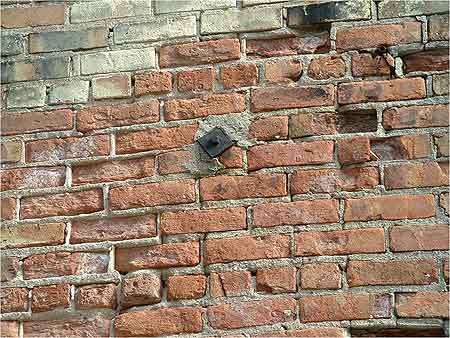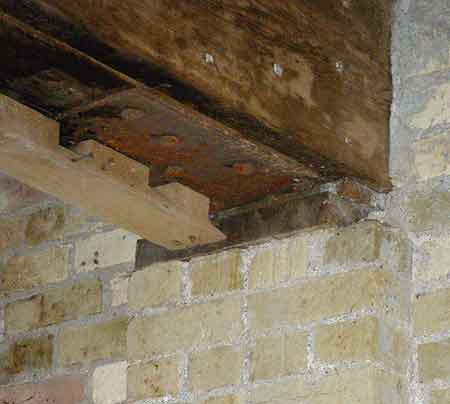Article and photos by Gregory Havel
Firefighting and building construction textbooks frequently refer to the “reinforcing stars” that are found on some buildings, especially those with masonry load-bearing walls (photo 1). These were often added to buildings from the late 19th and early 20th centuries to connect and support tie rods or cables that were installed to stabilize aging buildings. Sometimes they were connected to the ends of girders or joists rather than to tie rods or cables. Stars were the most common shapes, although other decorative shapes were also used.

(1)
We must remember that these decorative reinforcing plates were expensive and were used only on the sides of the building that were visible from the street. On a less-visible side of the building, the reinforcing plate was likely to be less decorative (photo 2), and might even be a piece of scrap iron.

(2)
The tie-rods or cables connecting these reinforcing plates fail at temperatures that are common in most structure fires. This failure can cause or accelerate the collapse of all or part of the structure.
An added hazard is that these reinforcing stars or plates are often hidden behind a decorative facade that has been attached to the exposed sides of the building to conceal its deterioration and unattractive appearance. In this case, they may be visible only on a side of the building that is normally not visible or that is visible only from an alley. If reinforcing stars or plates are known to be present, this deserves a note on your preincident plan; especially if they have been concealed by building renovation.

(3)
However, not all of these reinforcing stars or plates have been installed to stabilize a deteriorating or overloaded structure. Some structures were built with these reinforcements as part of the original design and were connected directly to girders or joists to provide added stability (photo 3, above), rather than to tie rods or cables. An indication that the reinforcing stars or plates are designed as part of the original building is that they are located at regular intervals on the walls or in rows (photo 4) rather than at random locations.

(4)
If the building’s girders and joists are tied to the exterior and load-bearing walls, this also deserves a note on the preincident plan. During a fire, failure of girders or joists tied to the exterior walls will cause failure of both the floors and walls, and not failure of the floors with the joists releasing from the walls as we might expect.
Download this article as a PDF HERE.


